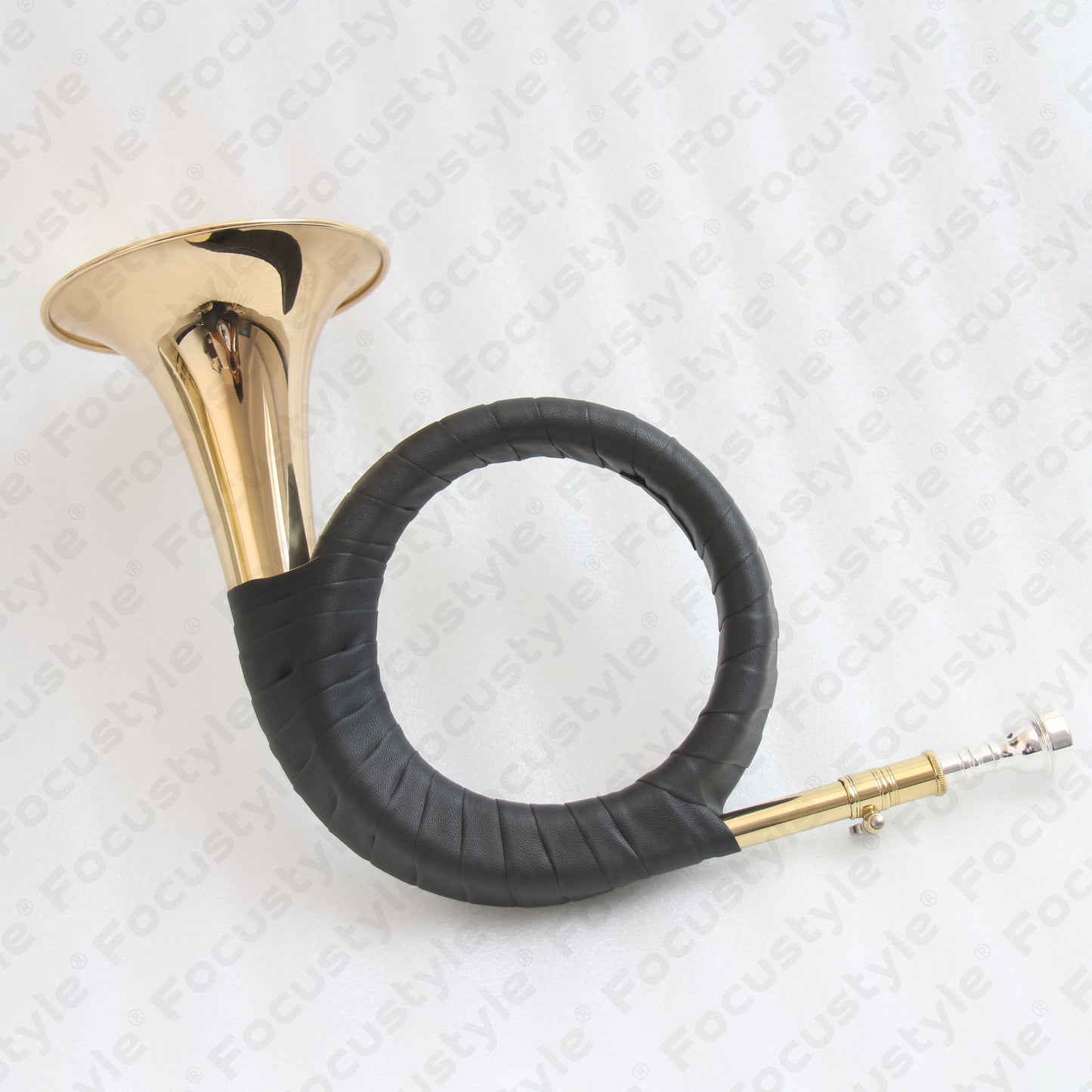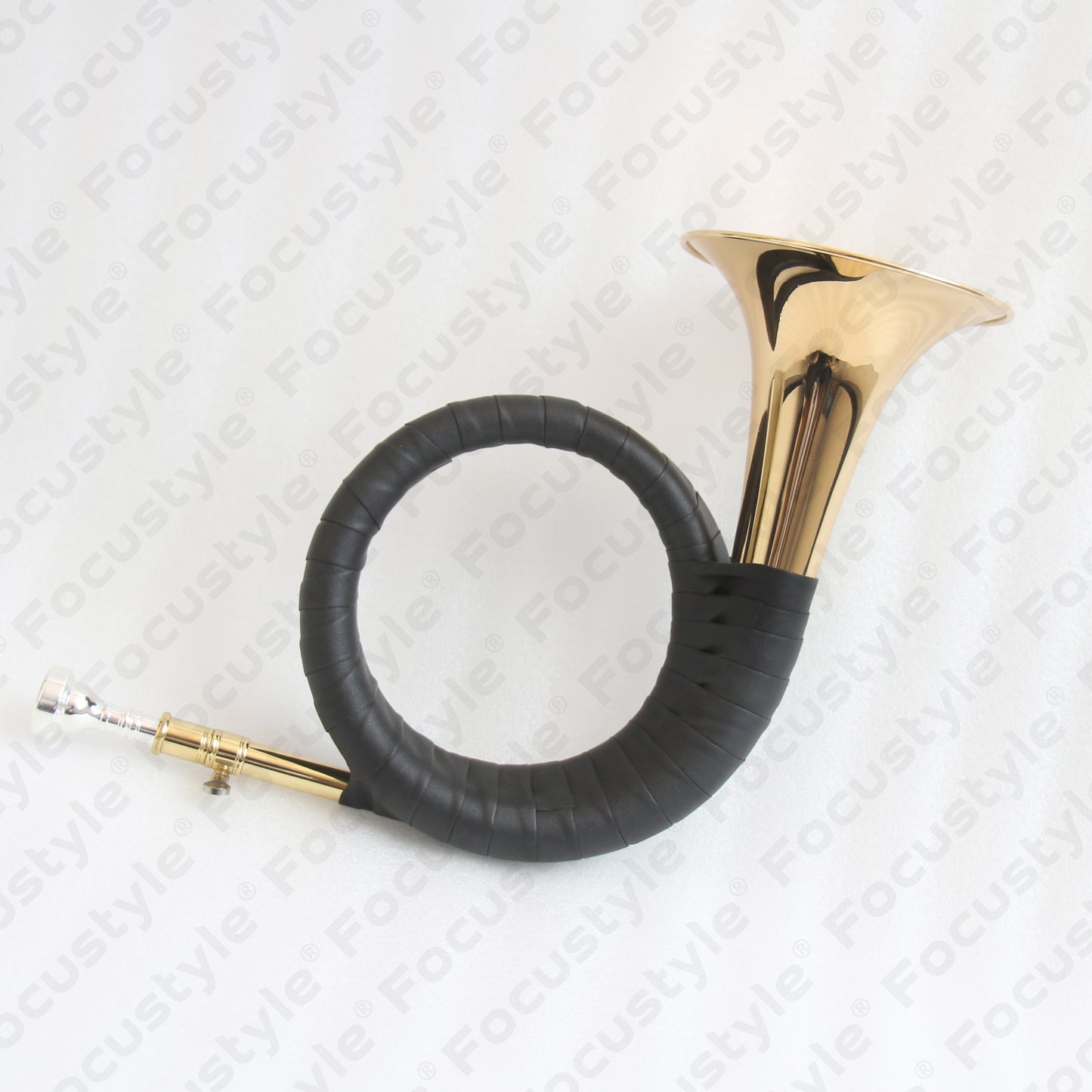1
/
de
3
Focustyle Elite FFH-600 Hunting horn
Prix habituel
$199.90 USD
Prix habituel
Prix promotionnel
$199.90 USD
Taxes incluses.
Frais d'expédition calculés à l'étape de paiement.
Click "shipping" to view our shipping policy
No reviews
Products not marked as in stock are made to order,typically taking 2-4 weeks.
Quantité
Impossible de charger la disponibilité du service de retrait
- Key of Bb
- 126 mm (4.9”) Gold Brass Bell
- Clear Epoxy Lacquer Finish
A modern hunting horn is a brass signaling instrument, typically coiled into a circular shape for portability, with a flared bell and a cup-shaped mouthpiece, designed primarily for use in fox hunting or similar equestrian pursuits. It evolved from ancient animal horns (like those from oxen, goats, or cows) used for basic signaling, but contemporary versions are crafted from brass, weighing around 750 grams, and lack valves or keys—requiring players to produce tones solely through lip vibration, air pressure, tongue control, and cheek tension.
Despite advancements in communication technology like radios and smartphones, modern buyers—primarily fox hunters, equestrian enthusiasts, and traditionalists—purchase hunting horns for a mix of practical, cultural, and aesthetic reasons.
Buyers value the haunting, echoing sound that evokes history, fostering a sense of shared purpose in clubs and societies.
And as simple wind instruments, they're used in brass bands, competitions, or events for melodic calls, offering a raw, acoustic experience. The skill of producing tones (e.g., hand-stopping for muffled effects) appeals to hobbyists seeking an authentic, non-digital musical outlet.
High-quality brass models serve as elegant decor, trophies, or heirlooms, with variations in coils, engravings, and makers adding rarity. Ethical sourcing from sustainable materials aligns with modern eco-conscious trends in hunting gear.
In an era of synthetic sounds, the horn's organic timbre provides immersion for role-playing historical hunts, reenactments, or outdoor adventures, appealing to those romanticizing pre-tech wilderness life.






